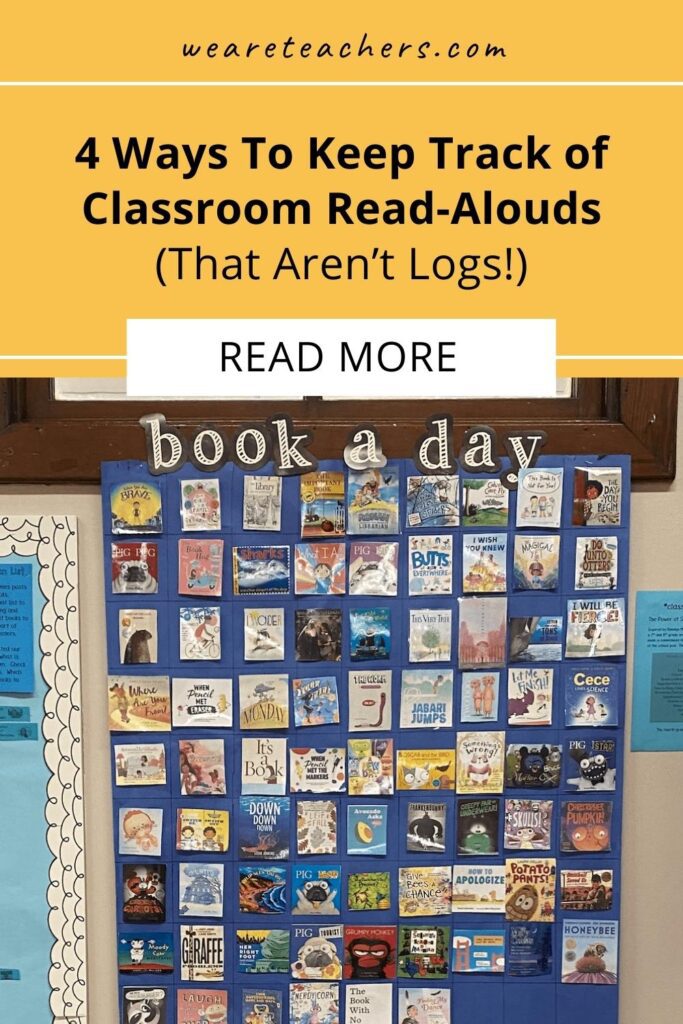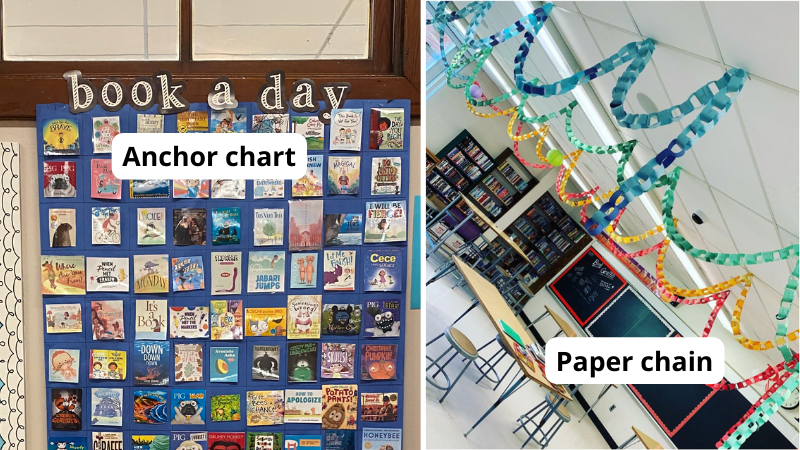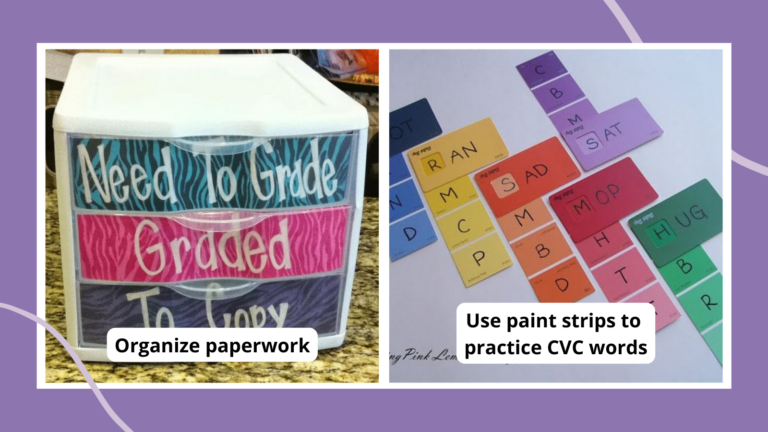Classroom read-alouds are a crucial component of developing students’ literacy skills and building a sense of community. To keep things interesting and to amplify student buy-in, I’m always looking for new and fun ways to track classroom read-alouds that don’t involve tedious logs! Here are a few different methods of fun read-aloud tracking that are bound to spice up your routine.
Digital Tracking
Padlet
For teachers who are drawn to an aesthetically pleasing visual, I highly recommend tracking on the ed-tech platform Padlet. Padlet is a free online bulletin board where teachers can create, post, and share ideas. Just create a Padlet for each read-aloud and post a picture of the book cover along with a brief description. That way, students can easily access the information they need in order to keep track of what books have been read. And there’s no printing, cutting, or gluing required on your end.
Check out these Padlet tracker examples from @_MissieBee and @MrCLamming on Twitter:
Started this at the beginning of the week based on your suggestion. Children really enjoying adding their preferences and a few recommendations have already been taken up by new readers. Could be the weather, but had a few children stay inside during lunch to keep adding. pic.twitter.com/3ZoLGzNo0c
— Chris Lamming (@MrCLamming) October 1, 2021
Google Slides
Another great way to track classroom read-alouds is through Google Slides. Many educators find it easier to track digitally versus all of the printing and cutting required for bulletin boards. Simply create one master slide (with a catchy title) and add photos of the book covers you’ve read with your crew each day. Display the slide during read-aloud time so your students can reflect on your group’s reading journey and easily make connections between stories. You can also add a link to a video or audio recording of the book under its image so students can access the slide to review the books they’ve read and also listen to the recordings if they were absent or want to reread them.
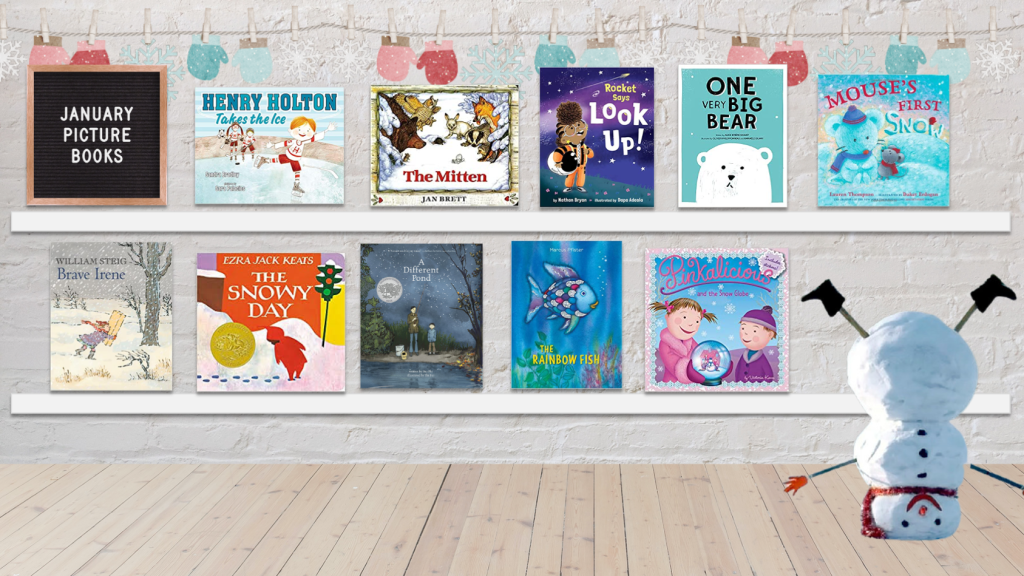
Source: Letters from 4th’s Digital Classroom Library
Hands-On Tracking
Anchor Chart Poster
Creating a “Book a Day” anchor chart poster has been my personal go-to for tracking read-alouds. At the start of the year, I sketch out an anchor chart poster with small boxes totaling the number of days we spend in school. For each day that we read aloud, I fill a box with the corresponding image of each book cover. Over the course of the year, the boxes on the anchor chart poster fill with books and create quite an eye-drawing visual. This poster definitely takes up space, so I keep mine in the hallway for all to see. It’s a great way to document our progress and motivate us to finish the school year!
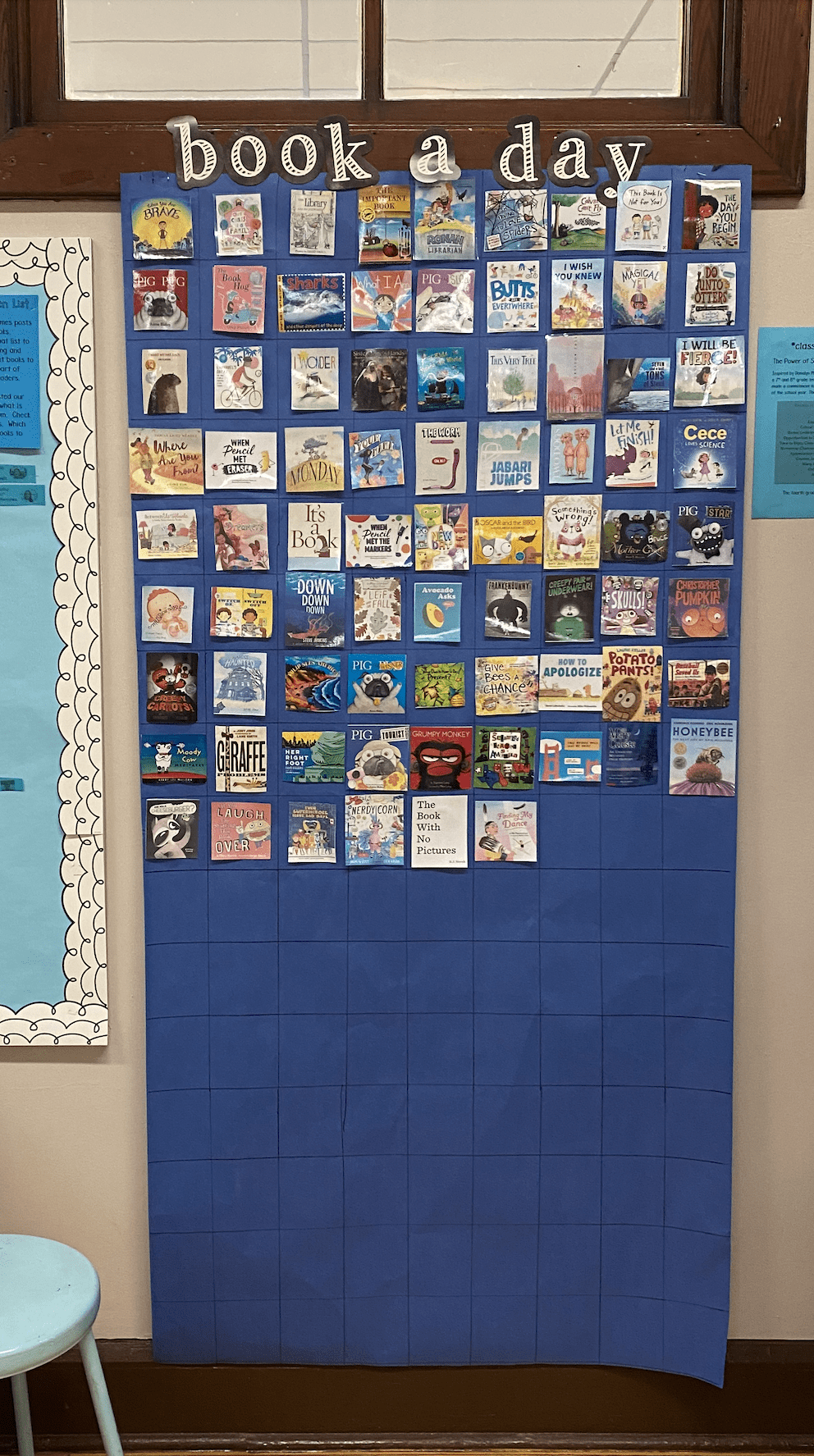
Paper Chains
If you want to get your students involved in the read-aloud tracking process, making paper chains is a great option. Each time you read a book, have each table group work together to make a paper chain link illustrating the book on one side and displaying a brief description on the other. Hang the chains up around the room to create a visual reminder of all the fantastic stories you’ve read together. It’s a great interactive activity for everyone and adds some bright decor to your classroom. Side note: These chains can grow to be pretty lengthy! Have some fun and get creative with your placement.
![]()
Source: Laura Randazzo (originally @reading_up_with_jones on Instagram)
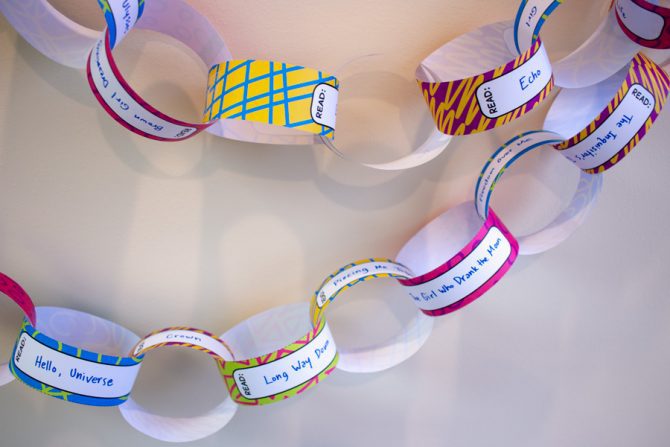
Source: Greene County Public Library
Using these fun and creative ways to track classroom read-alouds can make the experience much more enjoyable for both teachers and students—and it doesn’t have to be time-consuming. Each of these methods is simple and requires minimal prep. Any of these will help keep track of books while keeping students engaged and interested (score!). Plus, these methods give your class community tangible reminders that help them reflect on all the amazing books you’ve read together!
What’s your favorite way to track read-alouds? Let us know in the comments.
Looking for more articles like this? Be sure to subscribe to our newsletters!
